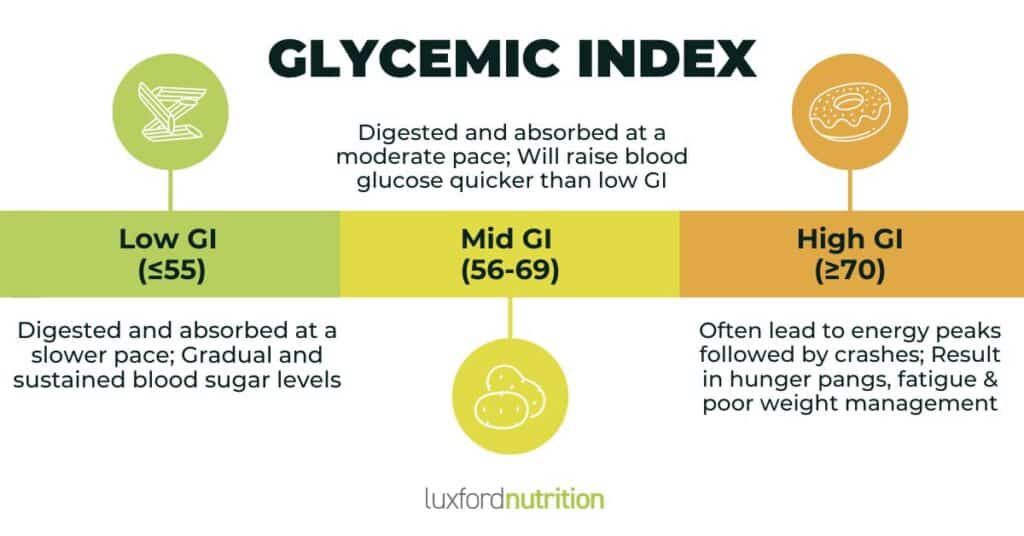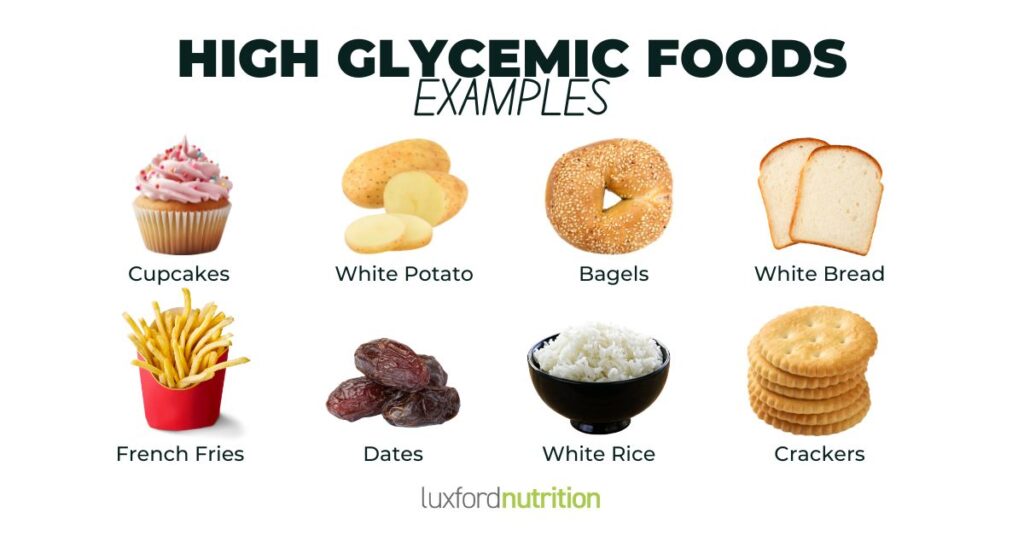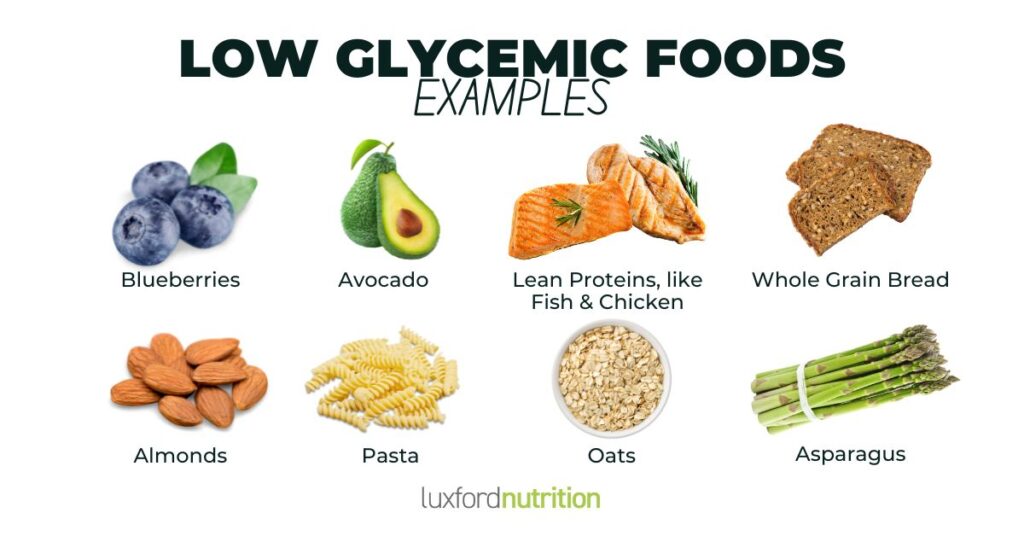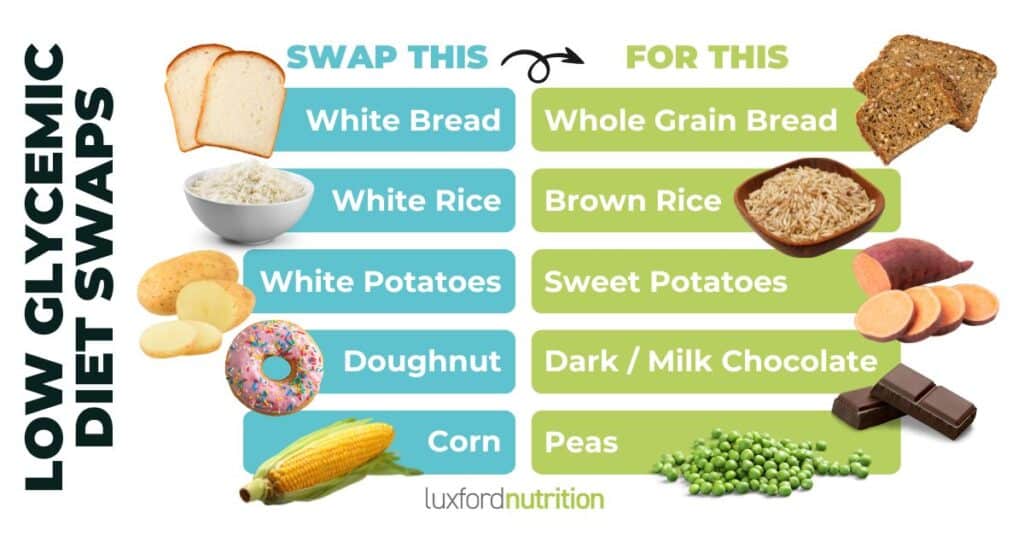Is a Low Glycemic Diet The Perfect Diet for You? What Are The Benefits?
Are you looking to improve your health and possibly shed some unwanted pounds? Have you heard about the benefits of a low glycemic diet and wonder if it’s the right choice for you? Let’s explore what a low glycemic diet entails, its principles, health benefits, impact on weight loss, and how to incorporate low glycemic foods into your daily meals. You never know – a low glycemic diet might be the perfect diet for you.

Understanding the Glycemic Index
The Glycemic Index (GI) is a valuable tool for assessing how different carbohydrate-containing foods impact blood glucose levels after eating. Foods are scored on a scale from 0 to 100, with higher values assigned to foods that cause a rapid increase in blood sugar. This is crucial because foods with a high GI can lead to energy peaks followed by crashes, which may contribute to hunger pangs, fatigue, and difficulty managing weight.
On the other hand, low GI foods tend to be digested and absorbed at a slower pace, resulting in a more gradual and sustained rise in blood glucose. This distinction helps in making informed choices about dietary intake, especially for individuals looking to maintain steady blood sugar levels. Foods characterized by a low GI include nutrient-rich options such as whole grains, certain fruits, vegetables, and legumes. In contrast, foods with a high glycemic index typically comprise processed items, sugary treats, and refined grains. Understanding and utilizing the glycemic index empowers individuals to make choices that can lead to improved satiety, better energy balance throughout the day, and a reduced risk of blood sugar spikes. These results are particularly beneficial for people with or at risk of diabetes and those focusing on weight management.


The Principles of a Low Glycemic Diet
The foundation of a low glycemic diet rests on the strategic selection of foods based on their glycemic index values. Key to this dietary approach is the emphasis on consuming whole, unprocessed foods which naturally exhibit lower GI scores. These foods include a variety of whole grains, fresh fruits, vegetables, and legumes. With a low GI score, these foods contribute to a gradual, more controlled blood glucose response post-consumption.
Incorporating lean proteins and healthy fats into your diet also plays a crucial role in the low glycemic eating plan. Lean proteins, such as chicken, fish, tofu, and legumes, assist in maintaining muscle mass and providing satiety. Healthy fats from sources like avocados, nuts, and seeds, contribute to overall heart health and help to slow the absorption of carbohydrates, further stabilizing blood sugar levels.
Another principle central to the low glycemic diet is the importance of balancing carbohydrate intake with adequate fiber. Fiber-rich foods not only help manage blood sugar levels but also aid in digestion and promote a feeling of fullness.
The ability to consume protein, fat, fruit, vegetable and fiber rich sources leads to a balanced and satisfying meal plan.

Health Benefits of a Low Glycemic Diet
Adopting a low glycemic diet can lead to numerous health advantages.
1. Diminished risk of type 2 diabetes
This dietary approach has been associated with a diminished risk of developing type 2 diabetes, as the emphasis on foods with a lower glycemic index aids in the prevention of the rapid spikes in blood glucose that can strain insulin function over time.
2. Improved heart health
Enhanced heart health is another significant benefit, as this diet supports the reduction of bad cholesterol levels and promotes a healthy blood pressure.
3. Better Weight Management and reduced hunger
Individuals following a low glycemic diet often experience improved weight management outcomes. The incorporation of nutrient-dense, low GI foods facilitates a more controlled appetite and reduces the likelihood of overeating, assisting in the maintenance of a healthy weight or in achieving weight loss objectives. Increased feelings of fullness and satiety are common, thanks to the diet’s rich fiber content, and the desire to snack is reduced.
How to Incorporate Low Glycemic Foods into Your Diet
Transitioning to a diet rich in low glycemic foods is a straightforward process. First, identify and replace high glycemic foods with lower glycemic foods. We are not forbidding food in this equation. We are substituting with strategic and healthier choices. For instance, instead of white rice, opt for quinoa or brown rice, which are packed with fiber and nutrients. Incorporate a wide variety of vegetables into your meals; not only do they have low GI values, but they also enhance the overall nutritional quality of your diet. When choosing fruits, go for those with lower sugar content like berries, cherries, and apples, which are delicious and won’t spike your blood sugar.

To make meal planning easier, focus on integrating lean proteins and healthy fats that slow down the absorption of glucose and provide sustained energy. Fish, chicken, avocados, and nuts are excellent choices that complement low glycemic carbohydrates well. Exploring different herbs and spices can also add flavor without adding sugar or unhealthy fats to your dishes. Herbs and spices also have other medicinal or detoxification benefits. See my other blog for more information on the benefits of herbs and spices!
By paying attention to food labels and opting for whole, minimally processed foods, you can gradually build a diet centered around low glycemic principles.
Potential Challenges of the Low Glycemic Diet and How to Overcome Them
Adopting a low glycemic diet can present obstacles, particularly in meal planning and budget management. A practical approach to simplifying meal preparation is to leverage batch cooking. Dedicate a portion of your weekend to prepare large quantities of low GI foods, such as whole grains and legumes, which can serve as the base for meals throughout the week. This not only saves time but also ensures that you have healthy options readily available.

For those concerned about the higher cost associated with fresh produce and quality whole grains, exploring the frozen section for fruits and vegetables can be a cost-effective alternative. These options are flash-frozen at peak ripeness, preserving their nutritional value at a more affordable price point. Purchasing grains and legumes in bulk can further reduce expenses.
Creativity in the kitchen can also mitigate monotony; experimenting with different herbs, spices, and low GI ingredients can keep meals exciting and varied. Lastly, engaging with online communities or forums dedicated to low glycemic living can provide support, exchange of ideas, and practical tips to navigate these challenges effectively.
Is a Low Glycemic Diet Right for Everyone?
While the benefits of a low glycemic diet, such as blood sugar stabilization and weight management, are appealing, it’s crucial to acknowledge that this diet may not suit everyone. Embarking on this dietary journey should be done under professional guidance. Consulting a healthcare provider or a registered dietitian is imperative to tailor the diet to one’s unique health needs and ensure it complements any existing treatment plans.
Moreover, personal dietary preferences or restrictions, like adhering to a vegan lifestyle or needing to avoid gluten, might require adjustments to maintain nutritional balance and variety. It’s important to assess whether the principles of a low glycemic diet can be adapted without compromising food satisfaction or nutritional adequacy.

In essence, while a low glycemic diet offers numerous health advantages, considering individual health conditions, dietary restrictions, and personal preferences is key to determining its suitability. Tailoring the diet to fit one’s specific situation, with expert advice, can help maximize its benefits while ensuring it’s a sustainable and enjoyable approach to eating.
If you need help managing your chronic health condition or weight management, it’s best to work with a registered dietitian who can personalize a diet to your lifestyle and needs. I encourage you to contact me here or book a free consultation here to discuss your current situation and goals, and how I can help you meet them.

